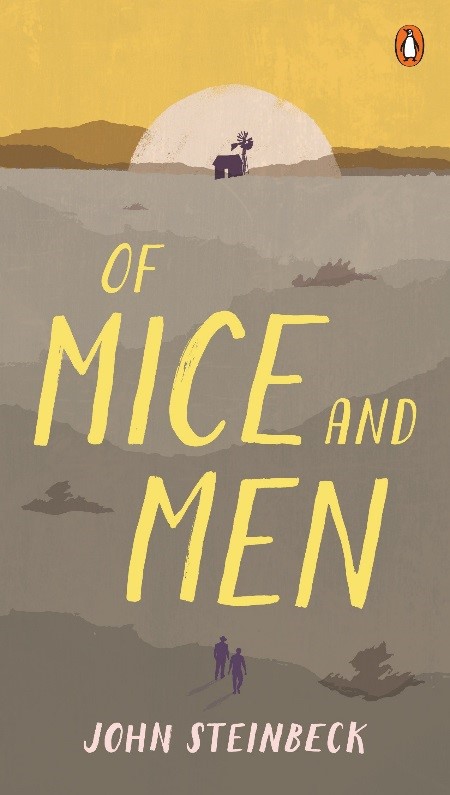
John Steinbeck’s Of Mice and Men depicts the American lifestyle and behavior
that circulated American society during the Great Depression. The novella shows how
social norms and the economically depressed condition of a country caused workers to
solely rely on their own instincts and strengths for the sake of survival. This sad lifestyle
is shown by two characters, Lennie and George, and their initially close relationship.
Lennie is a large man (big hands, big shoulders, big body) with a child-like mentality.
George, on the other hand, is a physically small but quick-witted and experienced with
the complications of society. Ever since Lennie’s aunt passed away, George takes the
responsibility of travelling and taking care of socially inexperienced Lennie, who on
more than one occasion causes them to lose their jobs because of his inability to
socially interact comfortably with the rest of society. As George and Lennie finally find a
job at a ranch, the people they meet shape the racism, sexism, ableism, and ageism
that Steinbeck incorporated into the novella. In other words, Steinbeck illustrates the
isolating effect of social class division through the interactions of the ranch owners and
workers.
George, Lennie, and the other characters are motivated by their individual
“American Dream”. However, George and Lennie have something the others don’t
have: the two characters have each other, a companionship. They share their American
Dream and their future plans. They travel together, support one another, and always
“have each others’ back”. However, as the novella continues, readers realize that even
such a rare relationship may not survive long during a time where a “survival of the
fittest” mode comes to play. The workers who can support themselves usually have
their hands too full to support others, too. Through this journey of painful class division
and sad reality, readers must find out whether George and Lennie will be able to sustain
their relationship until the end - or if they end up being like the rest of the workers on the
ranch.
As a reader, I was able to see how and which social norms have evolved or
stayed the same throughout America’s history. Steinbeck’s usage of imagery, tone, and
cyclical or unexpected events keeps readers at the edge of their seats. A black man’s
acceptance of being “less” than others. A white woman’s ability to determine the life or
death of this black man, yet inability to socially interact with the rest of society because
of her controlling white husband. An man who commits innocent murder and does not
even realize its major consequences. Thus, Steinbeck shows that although interaction
between social class was possible, they were only temporary. Some even resulted in
unfavorable consequences. People in this society, both proletariats and the bourgeoisie,
were forced to eventually realize their place in terms of class.
This is a great novella for anyone who is interested in being exposed to realism
and the results of class division on an individual. It is a novella that will probably keep
readers engaged until they finish it in one sitting. I would rate this book an 8.5/10.